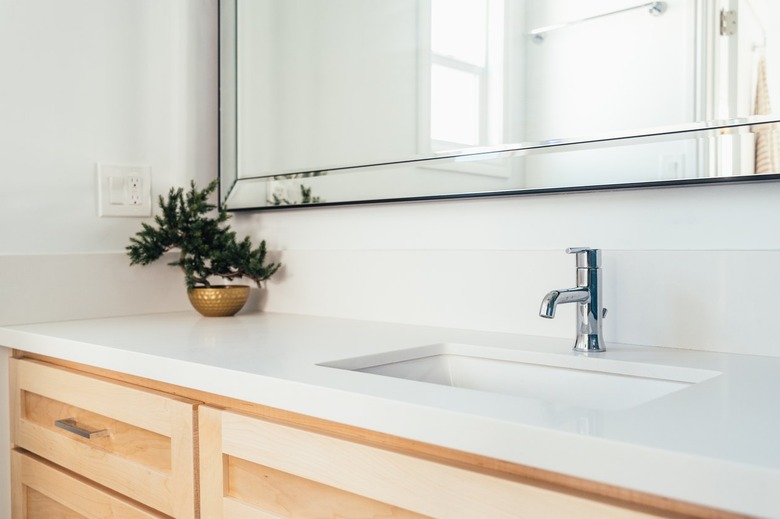How Does Water Pressure Work?
We may receive a commission on purchases made from links.
If there were no water pressure in your plumbing pipes, nothing would happen when you open a faucet. You might think that unlikely, but remember that your house, like every other house, has many vertical pipes that rise from the main water pipes in the ground, and without pressure, nothing would push the water up those vertical pipes.
Pressure is a measure of force per unit area, measured in pounds per square inch (psi) in the imperial measurement system used in the United States and measured in newtons per square meter (N/m2) in the metric system used everywhere else. Water pressure has to be generated, usually by gravity or by a pressure pump, and it has to be regulated to prevent it from getting so high that it causes leaks and bursting of pipes. Typical residential water pressure in the United States is between 40 and 80 psi, and plumbing fixtures won't work properly if it's lower than 20 psi.
Tip
Water pressure is generated by gravity or a pressure pump and regulated by the pump or a pressure regulator. In a typical American household, it's usually between 40 and 80 psi.
How Water Pressure Is Generated
How Water Pressure Is Generated
Gravity is the most common force that generates water pressure. Municipal water systems often have towers or reservoirs located on high ground into which treated water is stored for distribution. You determine the pressure exerted by the water in a reservoir by multiplying its weight (which varies directly with volume) by the height of the reservoir above the point of use. This means you can increase water pressure by making a bigger reservoir, lifting the reservoir higher or doing both.
Rural households often get water from a well, and since the well is below ground, some mechanical means of generating water pressure is necessary. In most cases, a well pump transfers water to a holding tank to which is connected a pressure pump that pumps the water into a pressure tank. The pressure tank has a flexible bladder that distends as the pump introduces more water, and the pump is programmed to stop pumping when the pressure in the tank reaches a preset value, usually between 50 and 60 psi. The pump is also programmed to start automatically when the pressure drops below a preset cut-in value, which is usually around 40 psi.
How to Regulate Water Pressure
How to Regulate Water Pressure
If you get your water from a well, you regulate the water pressure in your home by adjusting the cutoff setting of the pressure pump. If your home is on a municipal water system, you have a water meter, and usually right next to it is a pressure regulator. These might be in the basement or in the ground just outside the house. If the water pressure in your house is too low or too high, you adjust it by turning the nut on the regulator clockwise to lower pressure and counterclockwise to increase it.
How to Test Water Pressure
How to Test Water Pressure
Common signs of low water pressure include slow-running faucets and toilets that take forever to fill. When you notice these in more than one fixture, it could indicate low pressure in the water system. Before you adjust your regulator, though, it's important to test the pressure to avoid increasing the pressure to a dangerous level.
The easiest way to test pressure is to screw a pressure gauge onto an outdoor spigot. Make sure all the other faucets in the house are off, refrain from flushing any toilets and then turn the spigot on all the way and note the reading. If the reading is less than 40 psi, it's safe to adjust the regulator, but if it's between 40 and 80 psi, there's probably a leak or an obstruction in the pipes that's causing the low-pressure problem.
